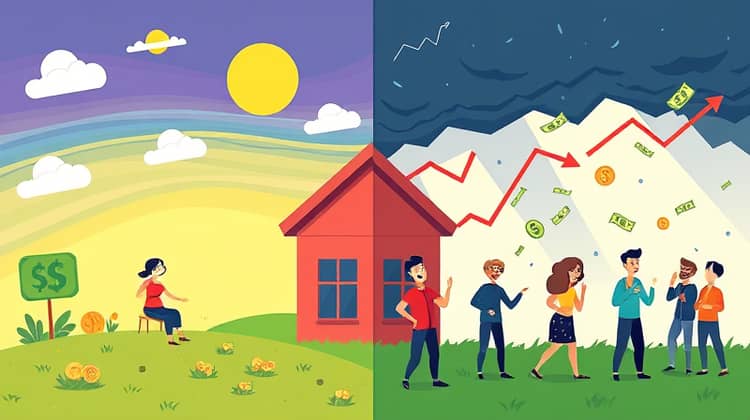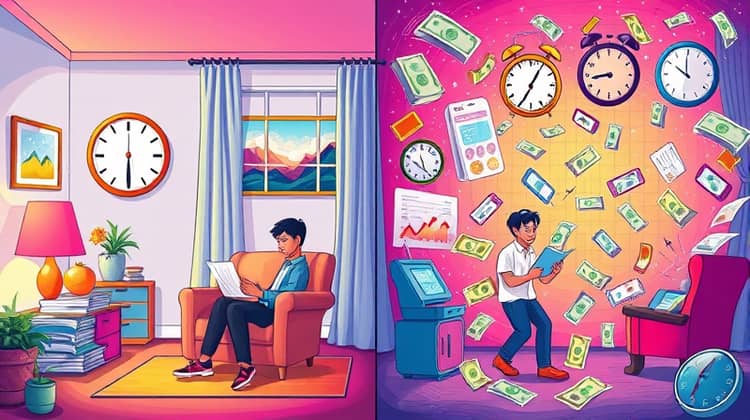Understanding the nuances of personal loans is essential for making informed financial decisions. Among the most critical factors to consider when taking out a personal loan are interest rates. They can drastically affect the total cost of borrowing, which is why understanding the difference between fixed and variable interest rates is paramount. This blog post will dissect these two types of interest rates, their advantages and disadvantages, and factors to consider when choosing between them.
Personal loans can be utilized for various purposes, including consolidating debt, covering medical expenses, funding a home renovation, or even financing a vacation. However, before embarking on a loan journey, it's crucial to grasp how interest impacts repayment amounts. Ignoring these details could lead to unexpected financial strain down the road.
Interest rates can often feel like a labyrinth to navigate, but simplifying these concepts can lead to better decision-making. Fixed interest rates offer predictability in payments, while variable rates can fluctuate, potentially yielding lower initial payments but possibly rising over time. Understanding your financial situation and repayment ability is essential in determining which option is best for you.
In this article, we will explore what fixed and variable interest rates entail, their pros and cons, and key considerations to guide your decision-making process. Let's dive into understanding interest rates more deeply.
Understanding Interest Rates

Interest rates are critical components of any loan, helping to determine how much you'll pay over time. In essence, the interest rate is the cost of borrowing money, typically expressed as a percentage of the loan amount. When taking out a personal loan, the interest rate influences both the monthly payment and the total amount repaid.
There are two primary types of interest rates you will encounter with personal loans: fixed and variable rates. Fixed rates maintain the same percentage throughout the life of the loan, while variable rates fluctuate based on market conditions and other economic factors, leading to potential changes in payment sizes.
A fixed interest rate can provide consistency and help with budgeting, as borrowers know exactly what their payments will be every month. On the other hand, variable interest rates may start lower, making them appealing to those looking to minimize initial loan costs. However, they carry the risk of future increases that can make borrowing more expensive over time.
Ultimately, the choice between fixed and variable rates hinges on personal circumstances, future financial expectations, and risk tolerance. Understanding these types will empower borrowers to pick the right path for their financial goals.
Fixed Interest Rates

Fixed interest rates are characterized by a predetermined interest percentage that remains constant for the duration of the loan. This means that regardless of economic shifts or fluctuations in market rates, your interest rate—and by extension, your monthly payment—will remain the same.
- Provide stability to borrowers
- Easier to budget for monthly payments
- Not affected by market fluctuations
- Ideal for long-term loans where interest rates are not expected to drop
This fixed structure can alleviate the stress of anticipating larger payments during economic downturns. It allows borrowers to plan their finances without the uncertainty associated with fluctuating rates. Consequently, many individuals favor fixed rates as they provide a safer route when planning substantial purchases or investments.
Variable Interest Rates

Variable interest rates, unlike fixed rates, change over time based on the performance of a benchmark interest rate, often tied to the central bank’s rate or other market indicators. This means that while you may enjoy lower initial payments, your costs could rise depending on economic conditions.
- May start lower than fixed rates
- Can lead to savings if rates remain stable or decrease
- Flexibility to benefit from market drops
- Potential for significant increases in payments
While this initial lower cost can appear attractive, borrowers should be cautious. The unpredictability of variable rates means that payments can jump significantly at any time, compounding total loan costs and straining finances if not carefully managed. It's essential for borrowers to weigh the initial benefits against the long-term risks when considering variable rates.
Pros and Cons of Fixed Interest Rates

Fixed interest rates present several advantages for borrowers. As mentioned, the most significant benefit is the predictability they offer—borrowers know precisely how much they owe each month. This stability is advantageous for long-term financial planning, particularly for those who may have fixed incomes or budgets.
However, there are drawbacks as well. If market interest rates fall, those with fixed rates miss out on potential savings. They remain locked into their higher rates regardless of market conditions, which can be disadvantageous in a declining interest environment.
- Stability in payments
- Ideal for budgeting
- Easier financial planning
- May result in higher total interest costs if rates drop
Pros and Cons of Variable Interest Rates

On the flip side, variable interest rates can offer a unique set of advantages. Initially, these payments tend to be lower than fixed rates, creating opportunities for savings, especially in a stable or declining interest environment. They can be quite appealing for short-term loans or for those who anticipate rates will remain low.
Yet, the downside looms large. If interest rates rise during the loan period, borrowers face the risk of substantially higher payments. This unpredictability can pose financial stress, especially for those who may not be prepared for sudden increases.
- Lower initial costs
- Potential for decreased payments
- Flexible interest rate structures
- Risk of rising costs disrupting budgets
Factors to Consider When Choosing Between Fixed and Variable Rates

When determining which interest rate type is more suitable for your personal loan, several factors warrant consideration. Your financial situation, risk tolerance, and future financial goals will play significant roles in this decision-making process.
- Current market interest rates
- Economic forecast and predicted interest trends
- Personal financial stability and job security
- How long you intend to keep the loan
Taking the time to analyze these factors can lead to better financial outcomes and help borrowers avoid unnecessary stress in the future. Understanding one’s financial landscape is crucial in this decision, as is preparing for potential changes in market conditions.
Conclusion

In conclusion, the decision between fixed and variable interest rates on personal loans requires careful contemplation. Both options present unique advantages and disadvantages that can significantly influence a borrower's financial health over time. Understanding the key differences is the first step toward making an informed choice.
A fixed interest rate delivers consistent payments and eliminates surprises, making it suitable for those looking for a stable financial arrangement. Conversely, variable interest rates can offer lower initial costs but can fluctuate, leading to unpredictable financial strain.
Ultimately, individuals must assess their own financial situations, future expectations, and comfort levels with risk before settling on an interest rate structure. While it can be tempting to chase the lowest rate, understanding the implications of fixed versus variable rates will lead to more sustainable financial decisions.
Take the time to weigh the pros and cons before committing to a personal loan, and don’t hesitate to consult with financial professionals to ensure you’re making the best choice for your unique circumstances.














